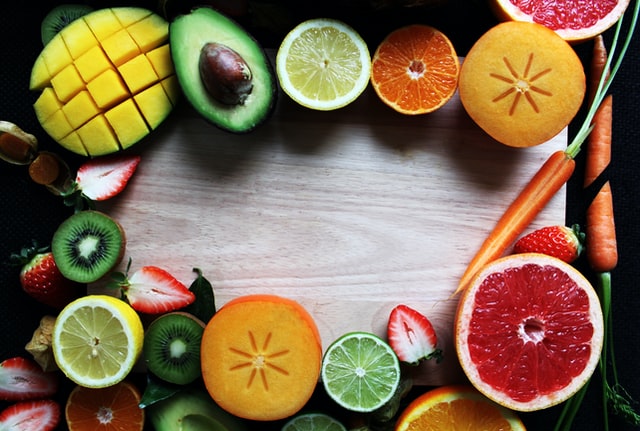We often forget how dirty our fruits and vegetables can be, with common favourites such as apples and potatoes being real germ traps. Fortunately Helpling is here to explain the process of keeping your fruit and vegetables clean and healthy.

The Walking Germs: Getting onto the track of bacteria
Racking up the air miles, your fruits and vegetables have travelled thousands of miles before they end up on your supermarket shelves. To extend their shelf life, they are often sprayed with a toxic cocktail of pesticides and coated with wax, which can often cause stomach cramps, headaches or even food poisoning.
Another big germ trap is the local supermarket. During your next shopping trip, take a little time to observe other customers buying their fruit and vegetables. You will often witness other customers picking up produce and smelling them at close proximity whilst checking the ripeness of the produce with their dirty hands. It is believed that our hands contain up to 4700 different types of bacteria – enough said.
Sadly, our hands are not the only magnet for germs. Flies also love to add fuel to the fire by laying their eggs inside of fruit and vegetable packaging. No matter how fresh your produce may seem, always protect yourself and clean thoroughly before consuming.
Strawberries, Peaches and Potatoes: Do they make you sick or healthy?
We all know how irresistibly plump and juicy your freshly purchased strawberries look, but we should resist the temptation to finish them up before getting home. This is because, due to the constant threat of pests, insects and poor weather conditions when farming, fruits and vegetables are commonly sprayed with pesticides around 15-20 times per week with up to 30 different types of pesticides. Furthermore, some of them are also coated with shelf-life extending wax.
The Rescue: How to clean your fruit and veg properly
Whilst this may sound like a simple solution, you’d be surprised by how many forget to simply wash their fruits and vegetables in cold water for 15 seconds. This can reduce up to 98% of bacteria. Just remember not to wash your produce for too long or else you risk damaging the natural protective layer around the product and losing important vitamins. Remember to wash your fruits and vegetables right before consuming them as bacteria loves to multiply in damp surroundings.
Still have doubts on how to wash specific fruits and vegetables? We’ve put together a list of the most commonly bought produce and techniques on how to thoroughly clean them:
Apples, Oranges and Pears:
Small, but loaded with vitamins: Apples, oranges and pears are undoubtedly a family favourite among the British. However, did you know that most of the vitamins inside of these two fruits are embedded within the skin? Instead of peeling the fruit, simply wash it under some cold water for 15 seconds to retain its goodness.
Berries and Grapes:
Soft fruits such as these should be washed carefully by soaking them in water and not under a powerful, running tap. Let these fruits dry on a piece of kitchen roll afterwards.
Melons, Mangos and Avocados:
Even if you do not eat the skin on these fruits, the germs and pesticides can easily reach the pulp of the fruit when peeling. Rinse the skin with warm water before to tackle this common issue.
Potatoes and Carrots:
Once you have brushed away the natural dirt from these vegetables, wash the produce, peel them and then wash again. It is common for numerous bacteria to be present underneath the skin of these vegetables.
Green Salad:
Consumers often fall for produce labeled “washed and ready to eat”. Pre-washed salads are often filled with yeast and mildew, which can cause gastrointestinal discomfort. Allow the lettuce to rest in cold water so that minerals will not be washed away and then dry the leaves in a salad spinner.
Extra Tip: Acidic salad dressings can have disinfectant effects! In addition to prior washing, the oil and vinegar mixture will reduce the bacterial count on your salad to less than 1%.



